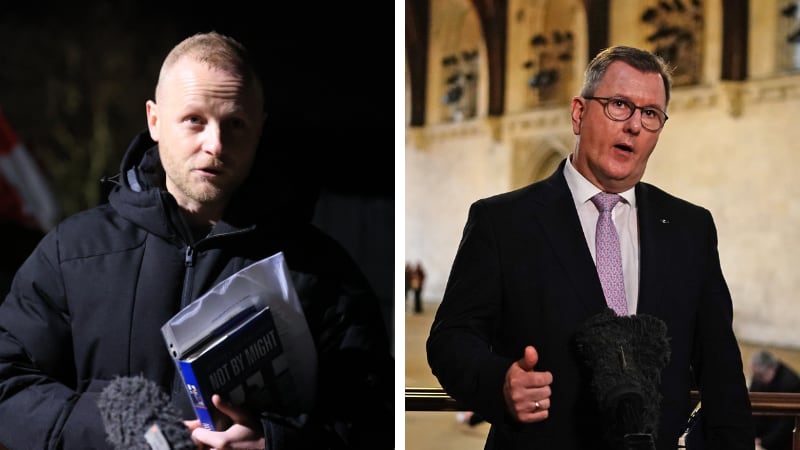A series of meetings held recently are to express opposition to an Irish sea border, and not “TUV rallies”, it has been insisted.
DUP MP Sammy Wilson previously ruled out attending a gathering in Carrickfergus on Tuesday evening contending they were creating a “poisonous atmosphere” and were “TUV electioneering”.
A number of events have been organised by TUV leader Jim Allister and campaigner Jamie Bryson since the DUP struck a deal with the Government over post-Brexit trading arrangements and returned to devolved government.
DUP leader Sir Jeffrey Donaldson said the Safeguarding the Union document has effectively removed the so-called Irish Sea border for goods moving from Great Britain to, and staying in, Northern Ireland.
Addressing the meeting in Carrickfergus, campaigner Jamie Bryson claimed a “large percentage” of the DUP oppose the deal and challenged Sir Jeffrey to a public debate on it.
He also said the events “are not TUV rallies”.
“These are anti Irish Sea border meetings against the Surrendering the Union deal,” he said.
“It isn’t the TUV’s fault that they are the only party with a cohesive collective party stance against the Irish Sea border, alongside the PUP who, to be fair, have also rejected the deal.
“The only people who divided unionism were the DUP leadership who broke the central pledges which held unionism together, and who abandoned the Ulster Day 2021 joint-unionist declaration.
“I am confident that, in the fullness of time, there is only one outcome here, and that is that every reasonable unionist will realise they have been fundamentally misled and that the Surrendering the Union far from removing the Irish Sea border, in fact, embeds it.”







